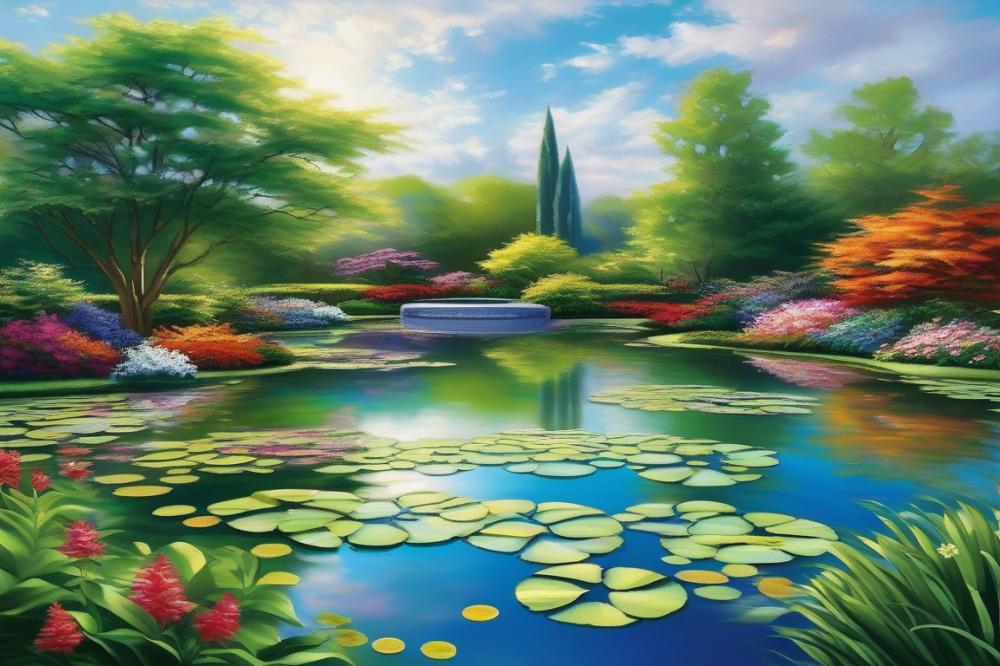Combining Traditional and Contemporary Japanese Garden Elements
Japanese Gardens are often seen as serene spaces that reflect nature’s beauty. They invite contemplation and encourage mindfulness. These spaces have a long history, deeply rooted in tradition while still inspiring modern creativity.
Blending traditional elements with contemporary features can create a stunning landscape. Think of stone pathways winding through a natural setting or a koi pond filled with graceful fish. Today’s Garden Design can benefit from mixing old and new styles, enriching the overall experience. A zen garden might incorporate simple, raked patterns alongside colorful plant selections that bring vibrancy.
Today’s gardeners face the challenge of honoring traditional aesthetics while embracing innovative ideas. Now more than ever, striking a balance is vital. By merging distinct elements, one can cultivate harmony that speaks to both history and the present. Incorporating well-placed water features enhances tranquility and draws the eye, while offering a spot for reflection.
This article aims to explore the beauty found in this fusion. Readers will discover how to thoughtfully incorporate various landscaping techniques to make a garden both beautiful and functional. By the end, you will have insights into creating an outdoor masterpiece that respects tradition and showcases contemporary flair.
Understanding Traditional Japanese Garden Elements
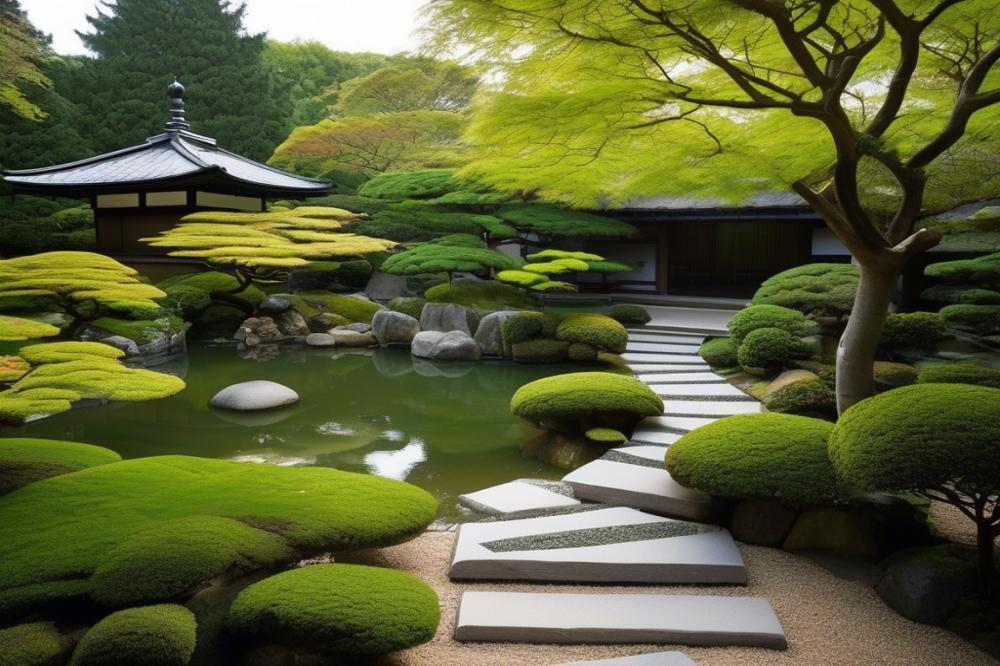

Most traditional gardens in Japan reflect deep cultural values. These spaces are not just places to admire; they represent harmony and balance with nature. Features often include stone pathways, koi ponds, and fascinating water features. Every part of a garden serves a specific purpose, both visually and spiritually.
Stone pathways guide visitors through a garden, inviting exploration. These paths often symbolize a journey, encouraging people to appreciate the beauty around them. They also maintain a sense of organization in the overall layout. The careful arrangement of stones contributes to the landscaping’s aesthetic appeal.
Philosophical Significance and Aesthetics
The philosophy behind these gardens often emphasizes the importance of tranquility. A zen garden, for instance, provides a place for reflection and meditation. Raked gravel or sand mimics the flow of water, enhancing a feeling of peace. This simplicity allows observers to clear their minds and connect with their surroundings.
Water features, such as streams or ponds, represent purity and renewal. Koi ponds, in particular, add vibrancy and life to a garden. Watching the colorful koi swim can be quite soothing. Each element invites deeper thought and inspires a connection to nature.
Examples of traditional elements
To enhance garden aesthetics, careful plant selection is crucial. Trees, shrubs, and moss play significant roles in creating a lush atmosphere. Each plant expresses a season, contributing to the overall beauty. Selecting the right combination ensures a dynamic environment that changes with nature.
Incorporating these traditional elements into a landscape brings a sense of calm. Whether you are designing a small space or a large area, blending pathways and ponds creates a balanced feel. Keeping these principles in mind can lead to a unique environment where tradition meets modern creativity.
Exploring Contemporary Japanese Garden Elements
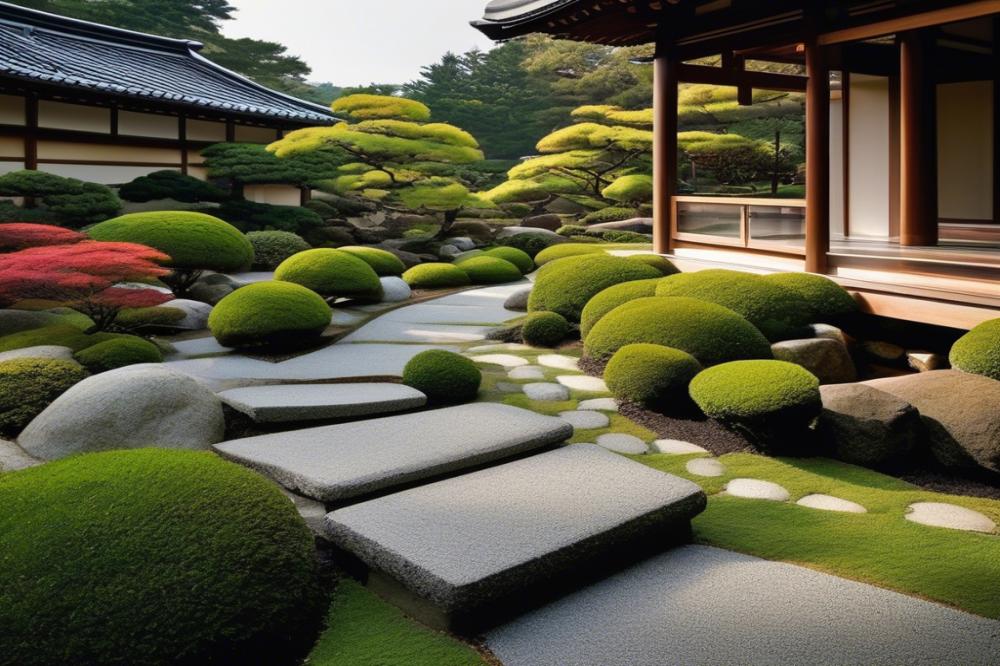

Contemporary Japanese Garden Design adds a fresh twist to traditional elements, creating vibrant spaces that resonate with modern aesthetics. This style focuses on simplicity while embracing nature’s beauty. Various characteristics set contemporary gardens apart. First, there’s an emphasis on minimalism, where less is often more. The layout encourages open spaces that invite relaxation and contemplation.
Innovative landscaping techniques play a significant role in modern designs. Using materials such as steel, glass, and concrete alongside natural elements like wood and stone creates a striking balance. For example, the incorporation of stone pathways can guide visitors through the garden seamlessly. These paths offer a sense of direction that enhances overall harmony. Additionally, water features like koi ponds introduce movement and life. The sound of flowing water can have a calming effect, bringing tranquility to the space.
Modern plant selection greatly influences garden aesthetics. Designers today often opt for a variety of plants that blend well with traditional varieties, creating contrast and visual interest. Succulents and ornamental grasses might often join forces with classic bonsai and bamboo. Such choices not only reflect changing tastes but also offer year-round beauty. The aim is to celebrate the changing seasons while maintaining a cohesive look.
Zen gardens benefit from contemporary approaches as well. While traditional zen gardens focus on gravel and rock arrangements, contemporary interpretations may incorporate colorful stones and unique sculptures. This fusion promotes individual expression while retaining the essence of tranquility. Ultimately, merging the old with the new fosters a dynamic space that resonates with visitors.
Creating Harmony in Garden Design
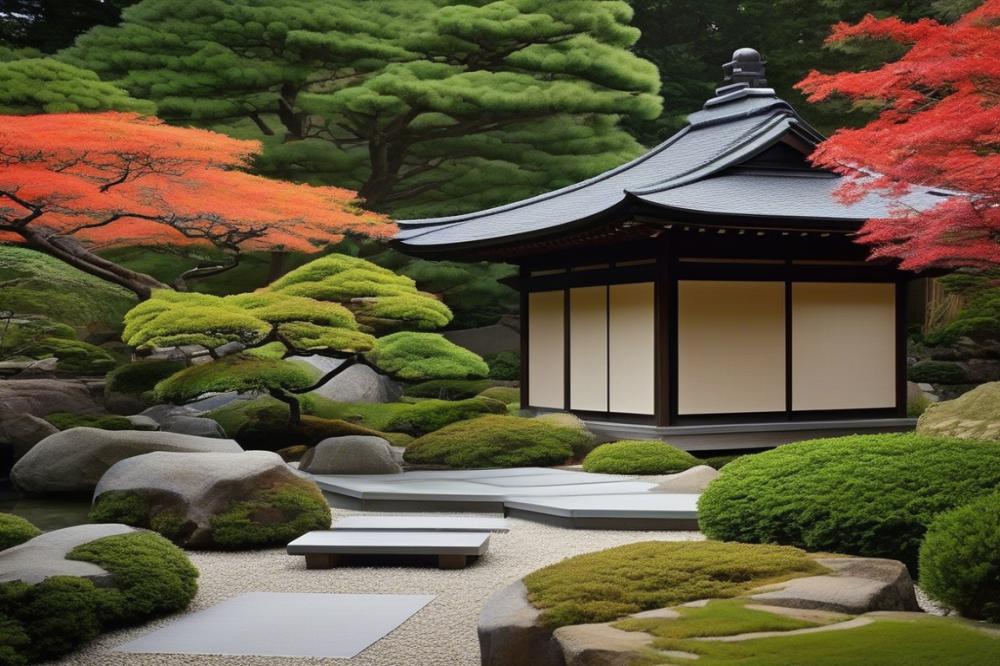

Balancing traditional and contemporary elements is vital for a unified look. A Japanese garden combines history with modern flair. Start by selecting traditional elements like stone pathways or a koi pond. These features create a classic foundation. contemporary elements, such as sleek water features or minimalist sculptures, can provide a fresh contrast.
Techniques for achieving harmony and flow in the garden focus on coherence. First, plant selection matters. Choose flora that complements both styles. For example, bamboo pairs well with modern design while symbolizing traditional Japanese aesthetics. Incorporating a zen garden can bridge these two worlds beautifully. Arranging rocks and gravel thoughtfully offers calmness and tranquility.
Mindful placement and design choices are crucial. Every element should speak to the others. Stones can lead visitors along paths and invite them to explore. Each curve and corner should feel deliberate. Allowing enough space helps maintain openness, promoting a sense of balance. Diversity in materials will also enrich the garden’s appearance.
Always consider how water features interact with other elements. Ponds or streams can reflect light and beauty, enhancing garden aesthetics. Design paths that encourage visitors to experience elements in unison. The overall goal is a seamless blend of nature and artistry. A harmonious garden creates a sense of peace and enjoyment for everyone.
Incorporating Zen Garden Principles
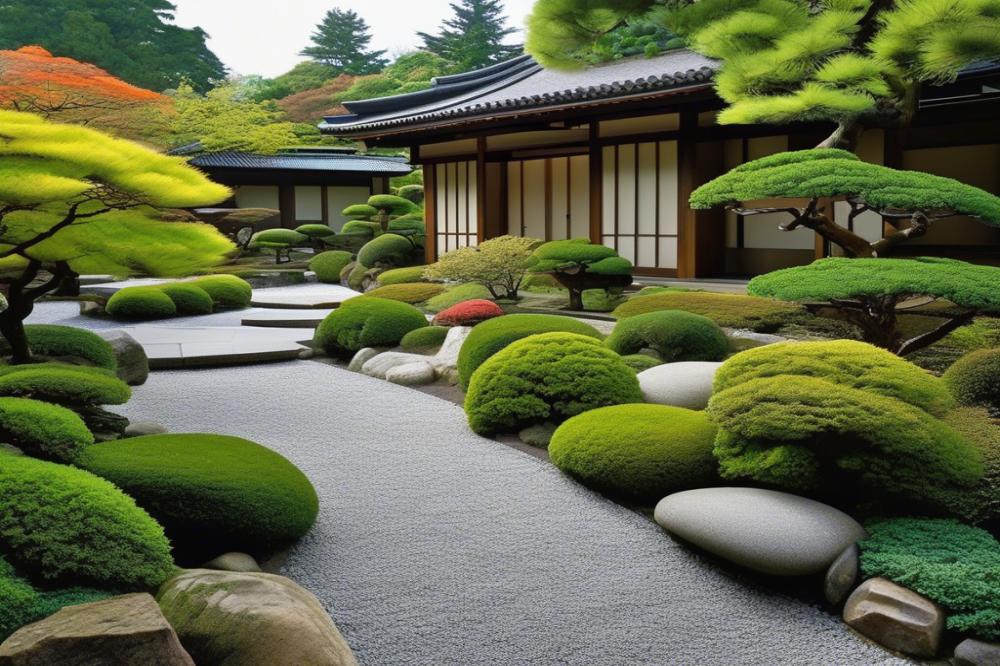

Role of Zen Philosophy in Garden Design
Zen philosophy plays a crucial role in creating serene garden spaces. This ancient approach emphasizes simplicity and mindfulness. By focusing on natural elements, gardeners can promote tranquility. Every garden becomes a place for reflection and peace. Traditional elements may include rocks and gravel, while contemporary elements can introduce sleek lines and modern materials. Finding balance between these styles is essential.
Creating Tranquil Spaces with Traditional and Modern Features
Creating a space that invites relaxation is key. A koi pond can serve as a focal point, offering life and movement. Integrating stone pathways invites exploration, encouraging wanderers to engage with the surroundings. Water features add soothing sounds, enhancing the calming atmosphere. Using traditional plant selection helps retain authenticity while also allowing for contemporary aesthetics. The right combination fosters harmony between past and present.
Using Minimalist Design and Natural Materials
Minimalist design promotes an uncluttered visual experience. Fewer items mean a greater focus on each element’s significance. When you choose natural materials, like wood and stone, the garden feels grounded and connected to nature. Consider incorporating elements such as bamboo or rock beds alongside clean-lined furniture. Each choice should contribute to creating a cohesive feel. This approach not only looks good but also matches the core of Zen principles. While blending styles, remember that the ultimate goal is to enhance garden aesthetics and support a peaceful atmosphere.
Practical Steps for Garden Transformation
Transforming your outdoor space can be exciting. Start by sketching a design that balances traditional and contemporary elements. Consider what features represent your vision. Traditional elements might include stone lanterns and a zen garden, while contemporary touches could involve sleek water features or modern sculptures.
Guidelines for Planning and Implementing Design Changes
Begin with a solid plan. Analyze your current landscaping. Identify areas that need improvement and think about what you want to create. Emphasizing harmony is crucial. Every piece should complement the others, regardless of style. Measure the space carefully, then select focal points that draw the eye. A koi pond often serves as a beautiful centerpiece, blending serenity with charm.
Tips for Selecting Plants and Water Features
Choosing the right plants is vital for establishing your garden’s mood. Incorporate greenery that works well in your climate. Traditional options such as cherry blossoms or evergreens can mix beautifully with modern varieties like ornamental grasses. Don’t forget to think about colors and textures; they can make a big difference in garden aesthetics. When it comes to water features, consider adding a small fountain or a bubbling brook. Such elements will attract wildlife and enhance relaxation.
Advice on Stone Pathways and Their Placement
Creating stone pathways offers both functionality and visual appeal. Place them to guide visitors through your space. Use natural stones for a rustic appearance, or opt for sleek, cut stones for a contemporary look. Varying the widths of the pathways can add interest. Mix in gravel or soft moss between stones for a striking contrast. Always keep the flow of your garden in mind. Pathways should encourage exploration without overwhelming other aspects of the design.
Final Thoughts on Blending Garden Elements
Blending traditional elements with contemporary elements in your garden can create a space that feels both timeless and fresh. Focusing on balance is crucial. Classic features like stone lanterns or koi ponds can harmonize with modern landscaping techniques. Adding native plants or clean lines can give a distinctive touch while still respecting nature.
Exploring personal style allows for creativity in every choice. The beauty of gardens is in their individuality. Consider using color, texture, and layout that resonate with you. This is your space; let it reflect your personality! There are no strict rules to adhere to, so don’t hesitate to experiment.
Ultimately, Japanese Gardens offer lessons on simplicity, peace, and aesthetics. Even in our modern lives, such spaces can serve as a refuge. Enjoy the process of combining different styles. Each garden tells a story, and yours can be a fusion of old and new that speaks to harmony in a chaotic world.



